Brioche-style Sourdough Hamburger Buns are enriched with melted butter, milk, and egg, then mixed by hand (no mixer needed!) with a long 10-13 hour overnight rise. Divide, shape (how-to video below), then finish with egg wash and a sprinkle of seeds.
These fresh-from-the-oven Sourdough Burger Buns are pillow-soft yet sturdy enough to stand up to all the burger toppings, and they’re irresistible! This recipe is vegetarian and easily dairy free.
⭐️⭐️⭐️⭐️⭐️ Review: “This was my first recipe using my starter and it was soo delicious. Instructions are easy to follow and they are so soft and fluffy!” ~ Nicole
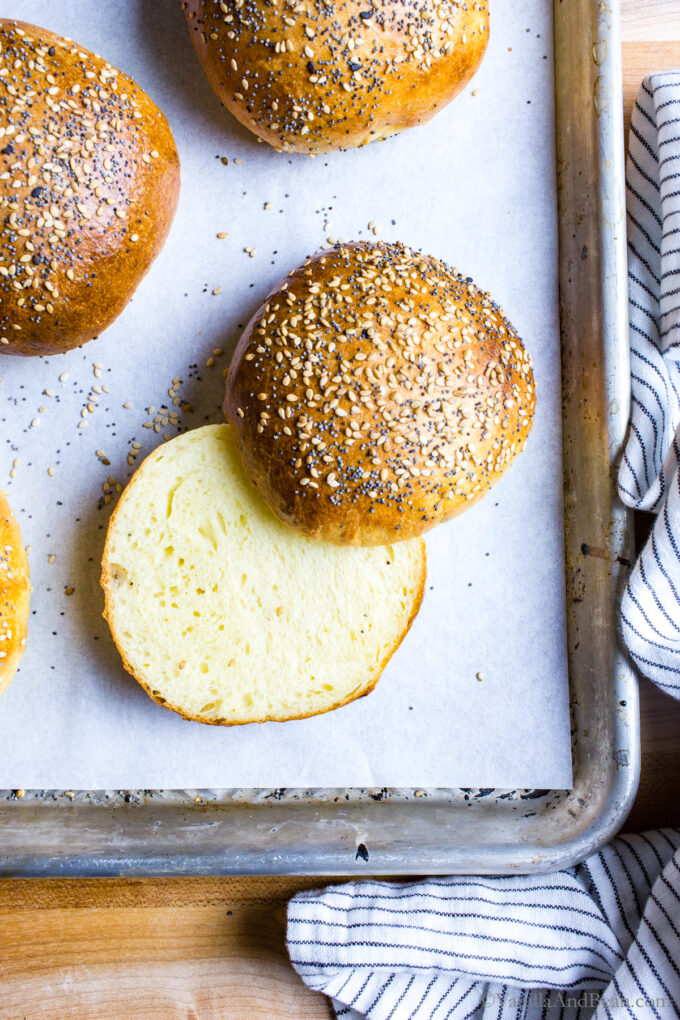
Table of Contents
Homemade Sourdough Burger Buns Highlights
Mmmm can you smell em’? The aromas wafting from the oven when Sourdough Burger Buns are baking reminds me of being at the bakery, but even better, it’s at home! If you go the extra mile for a good loaf of Sourdough Bread, then put these Sourdough Hamburger Buns on your baking schedule.
Because we’re incorporating melted butter into the dough there’s no stand mixer required, making these brioche-style buns effortless to pull together. With little hands-on time, a long slow rise, and short proof, these burger buns can be easily included into your burger-making plans.
Recipe Highlights:
- no stand mixer needed
- long overnight rise or short rise with long refrigerator rise
- makes soft yet sturdy buns
- easily dairy free
Be sure to watch how to shape sourdough burger buns in the video below.
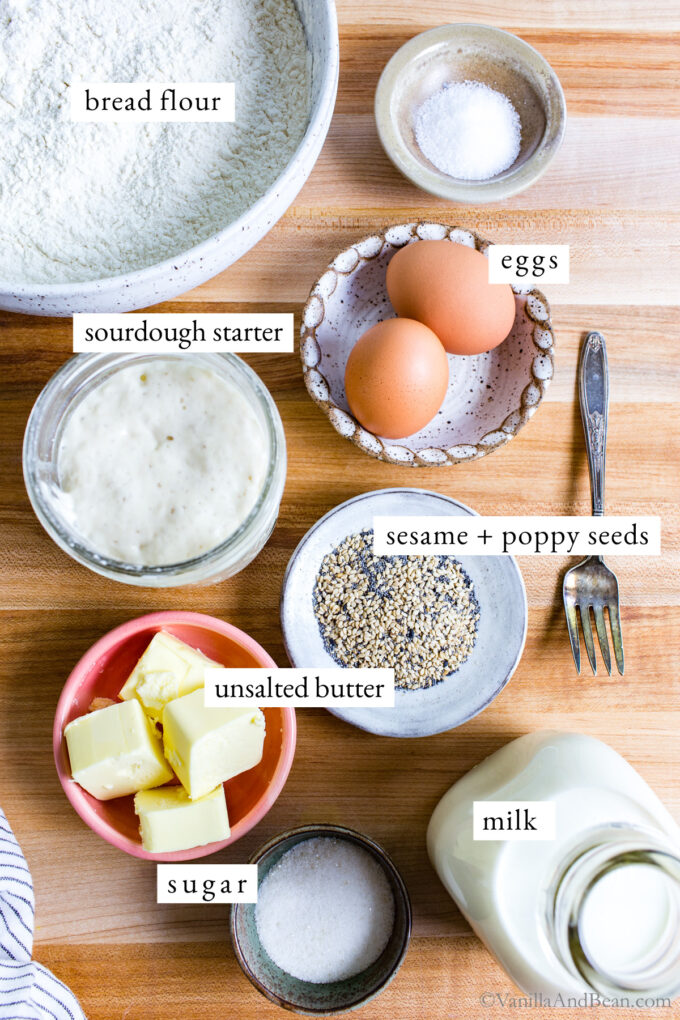
Ingredients You’ll Need
Just a few pantry staples are needed to pull these buns together. Here’s what you’ll need to whip em’ up (see recipe card for details):
- Sourdough Starter – 100% hydration, active, and doubled-in-size sourdough starter. If needed, I have a three-ingredient Sourdough Starter recipe you can use.
- Whole Milk – use whole dairy or plant milk. Store-bought plant milks are mostly water, so stick with homemade if you can. I like unsweetened Homemade Cashew Milk.
- Unsalted Butter – use dairy or plant butter. I like Organic Valley or Earth Balance Buttery Sticks (unsalted).
- Bread Flour – creates a sturdy, chewy, yet soft crumb that stands up to squishing and all the toppings. I use King Arthur Organic Bread Flour.
- Sugar – just enough to add a bit of interest and a slight hint of sweetness.
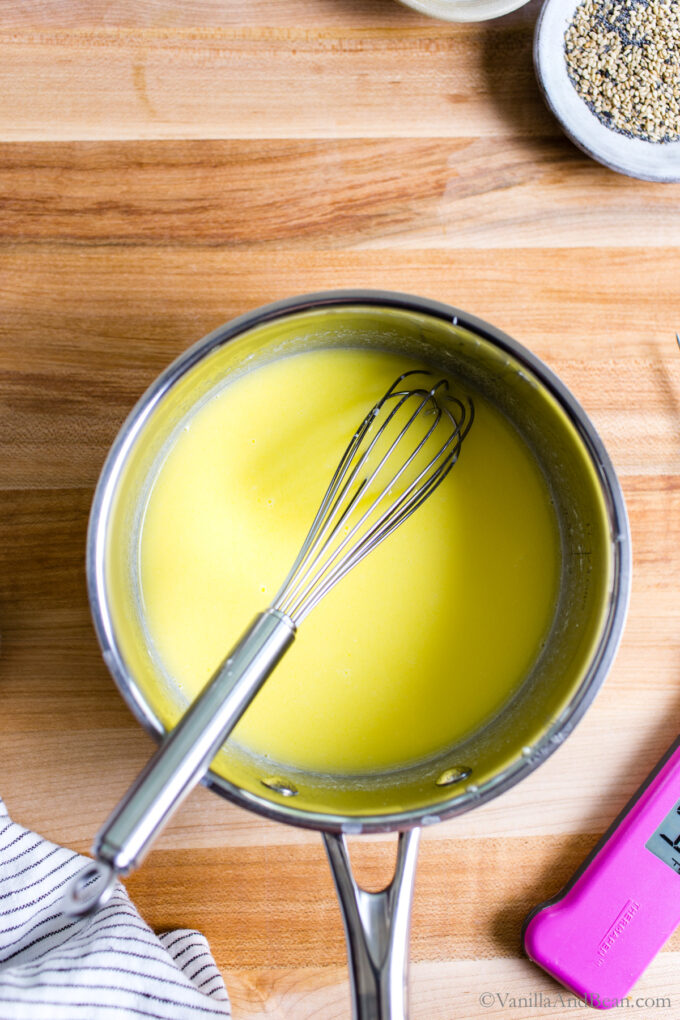
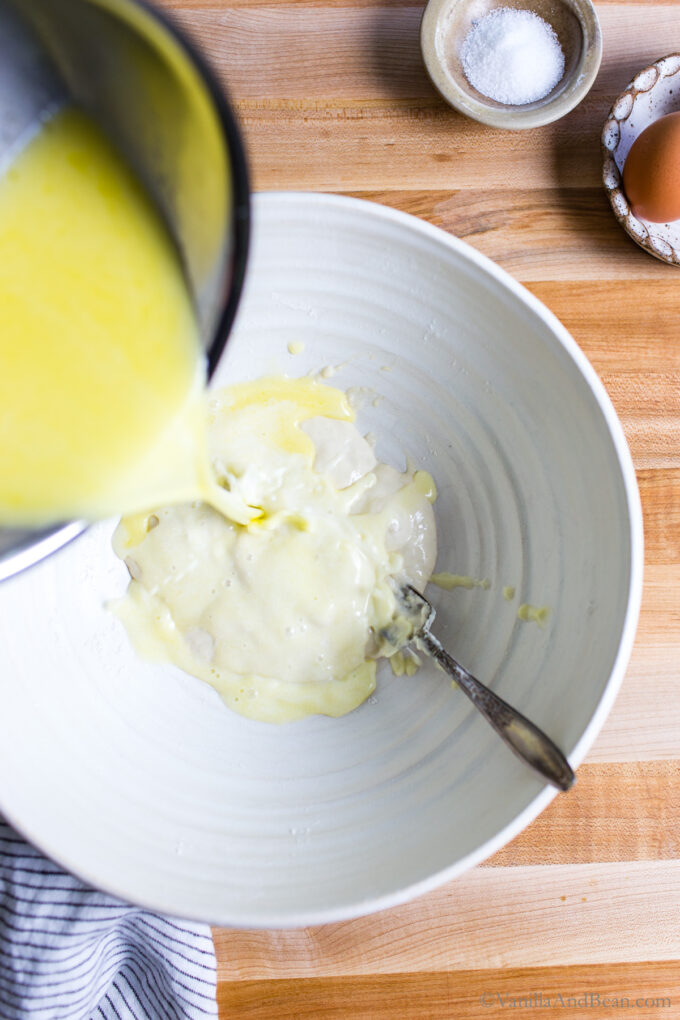
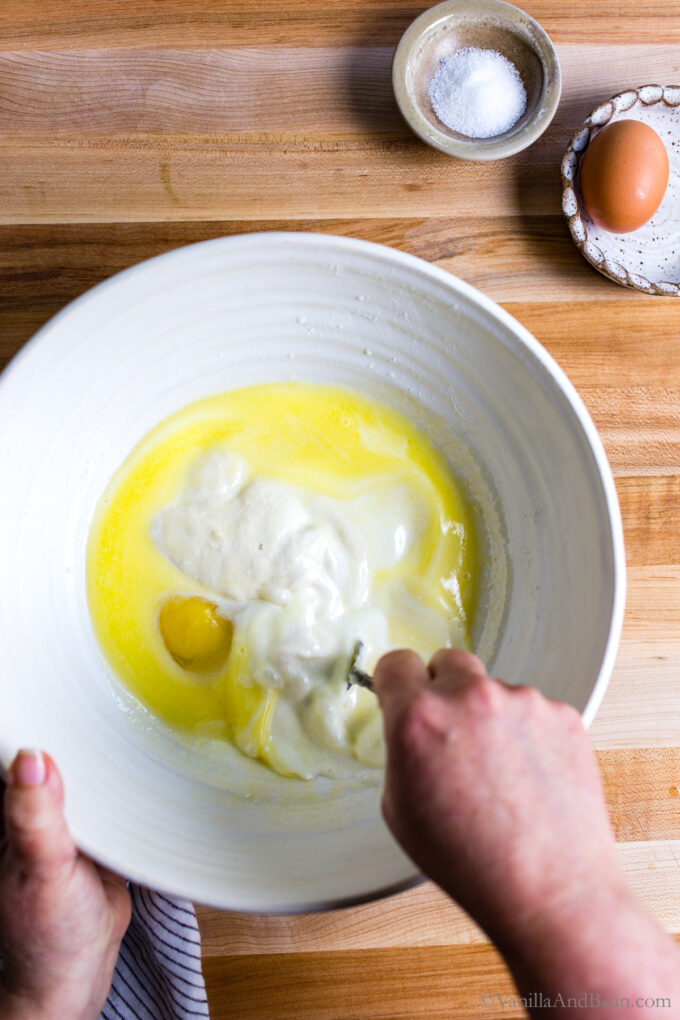
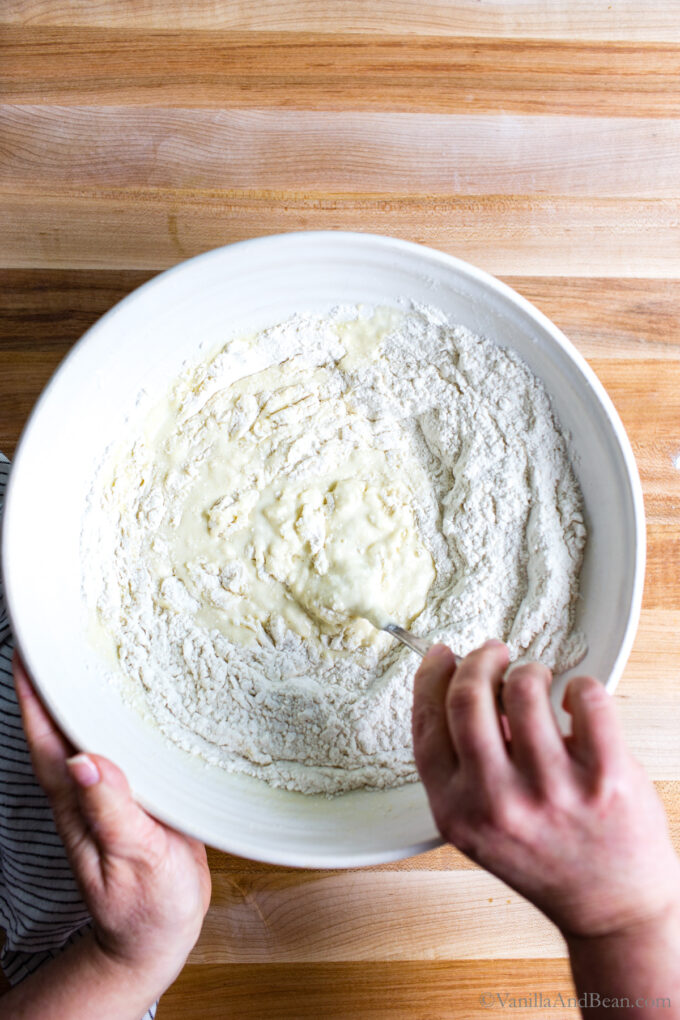
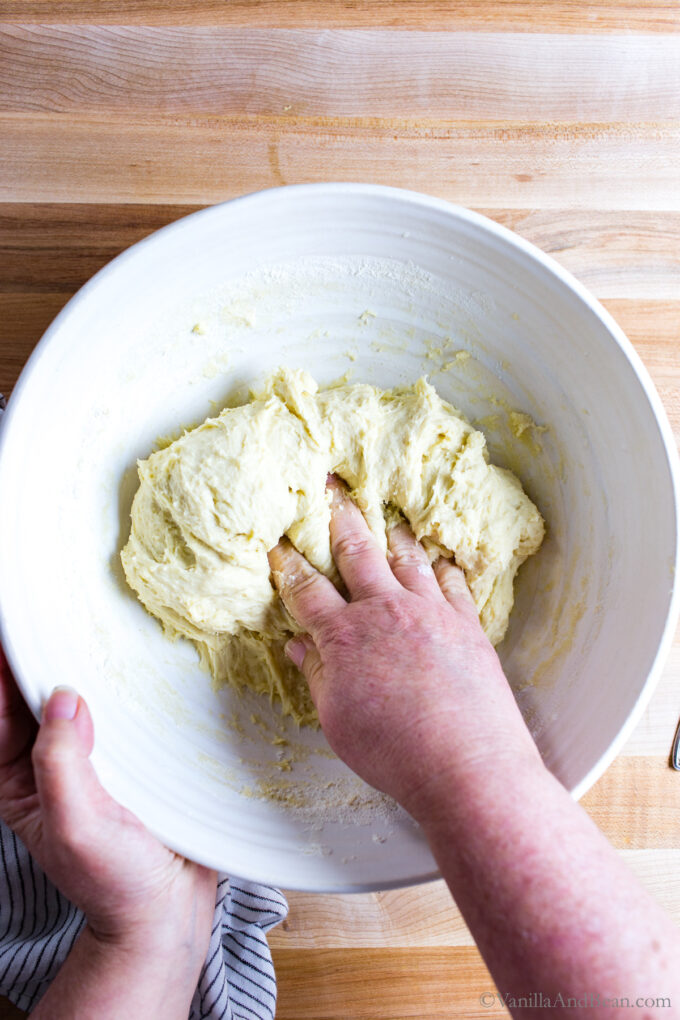
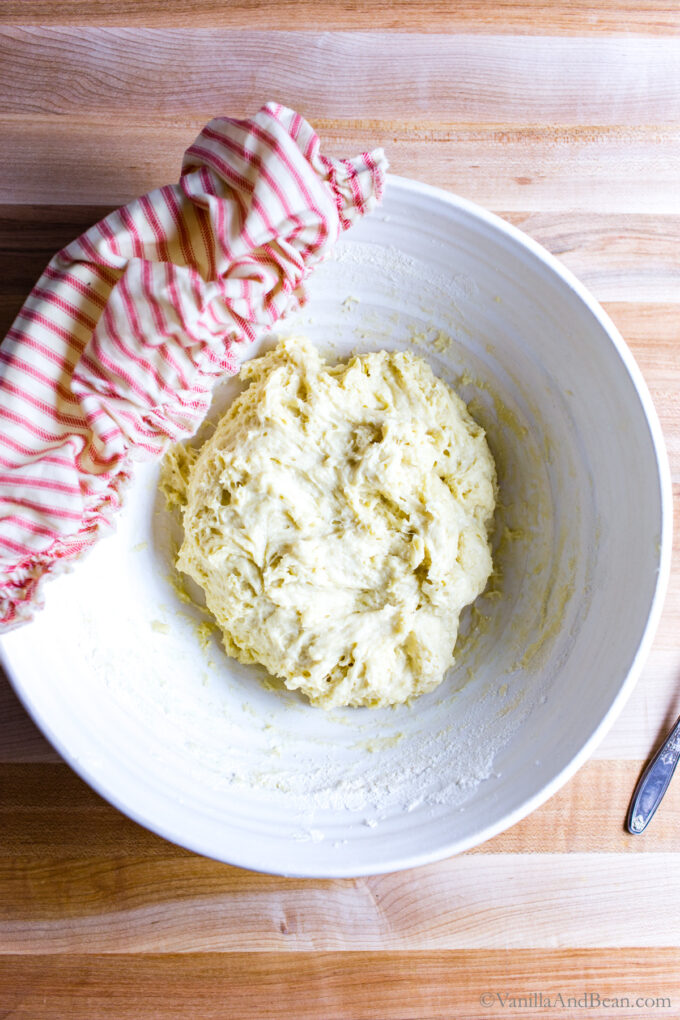
At a Glance: How to Make Sourdough Hamburger Buns
These brioche-style buns are super simple. We’re employing melted butter rather than softened butter, so we don’t have to use a mixer. In summary, here’s how to whip up these soft and rich Sourdough Buns (see recipe card for details):
- First, gently melt the butter in milk on low heat. Allow to cool to 80 Fahrenheit before mixing the dough.
- Second, whisk your sourdough starter, cooled butter mixture, and egg in a large mixing bowl.
- Third, add the flour, sugar, and salt to the wet ingredients. Mix until a dough forms.
- Fourth, perform a series of 2-3 stretches and folds with a 30 minute rest in between.
- Fifth, bulk overnight at room temperature for about 10-13 hours.
- Next, divide the dough, shape into balls (see video below), and place it on a parchment-lined sheet pan.
- Last, flatten the balls to 3 1/2 inches with the palm of your hand, proof 15 minutes until the dough is slightly puffy, then bake!
Just like Multigrain Sourdough Bread and Sourdough Pita Bread, these hearty buns require little hands on time. Best of all, they can be made ahead or pulled out of the oven just before you’re ready to assemble a burger. But just in case, baked rolls can be frozen, thawed, and rewarmed as needed.
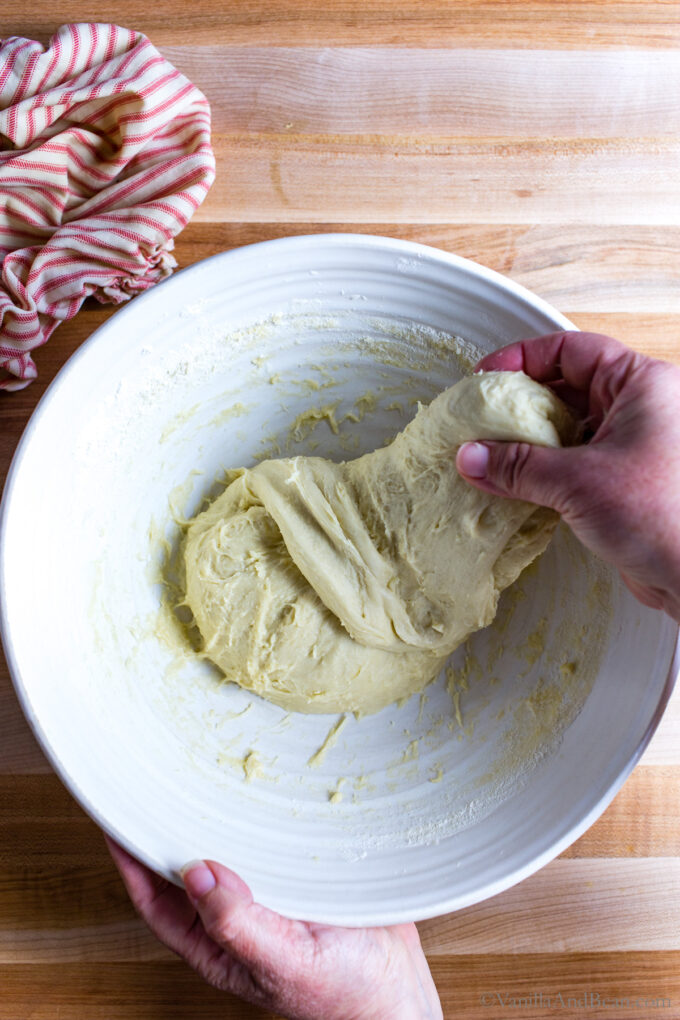
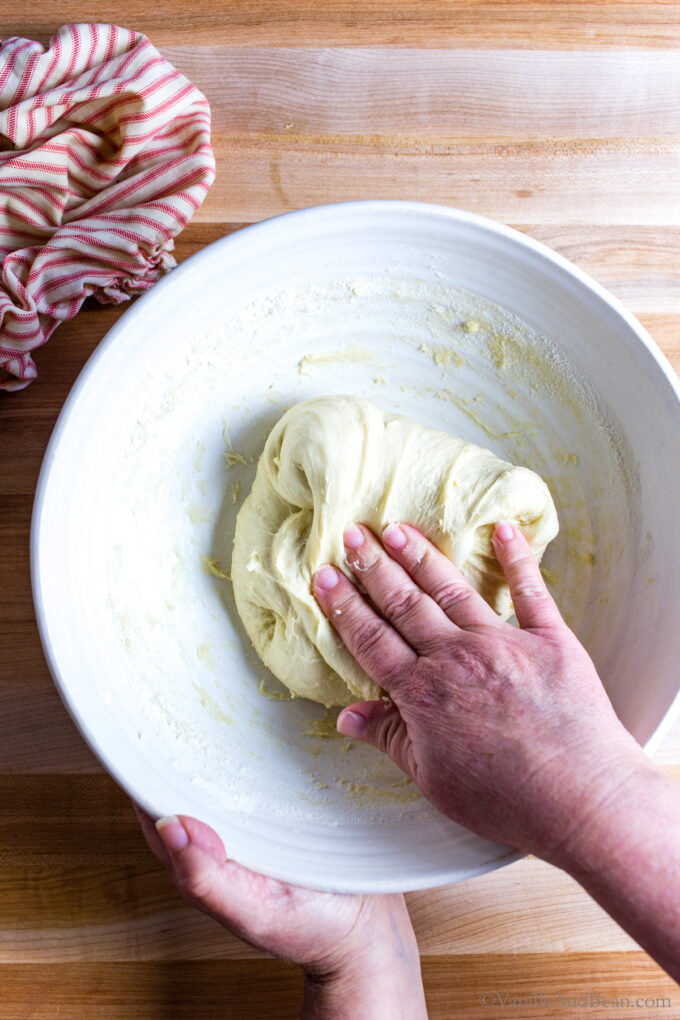
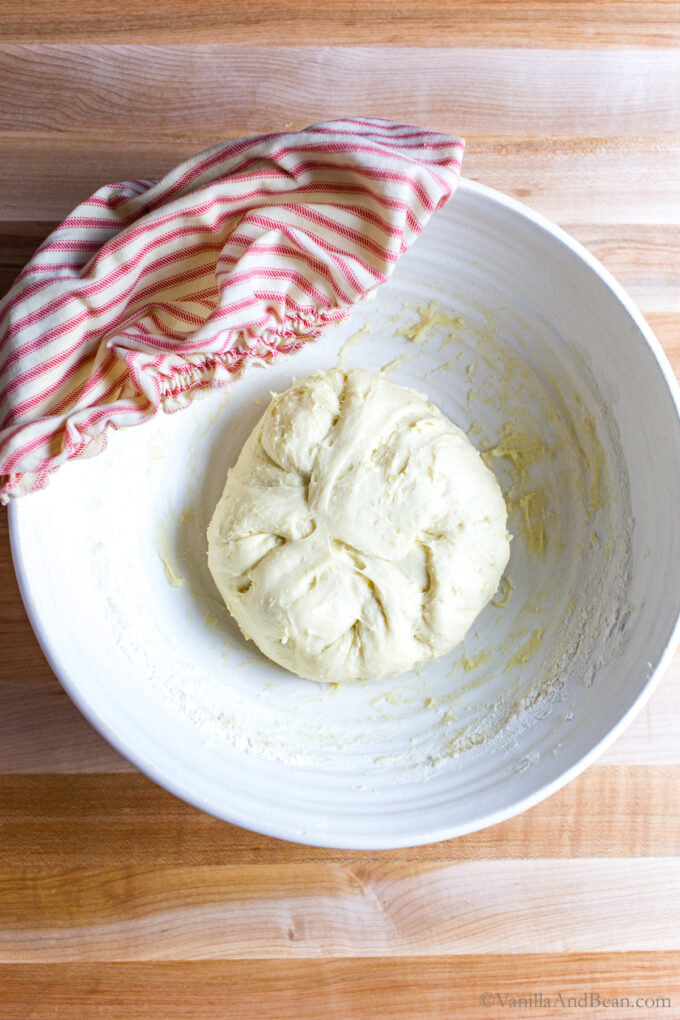
Most Asked Questions
How Long Does it Take for Sourdough to Rise?
- Sourdough rise (bulk ferment) time depends on ambient temperature and how active your starter is. Also, a firmer dough will take longer to rise than a well-hydrated dough.
- When fermenting at room temperature, bulk rise time in summer will differ from winter rise times.
- An ambient temperature of 68 Fahrenheit (20 Celsius) will require a bulk rise of 10-13 hours. My kitchen tends to be cooler most of the year, but in the winter, it’s downright cold. It’s not unusual for this sourdough recipe to take up to 13 hours or more to rise during the coldest months.
How To Tell When Sourdough Has Risen Enough
- The bulk fermented (first rise) dough is ready when:
- it no longer looks or feels dense
- is jiggly when the bowl is shaken
- has doubled in size
- you may see a few large bubbles on the surface of the dough
Got Sourdough Discard? I’ve got just the recipes to enjoy it in! My Sourdough Discard Recipes page is just a tap away.
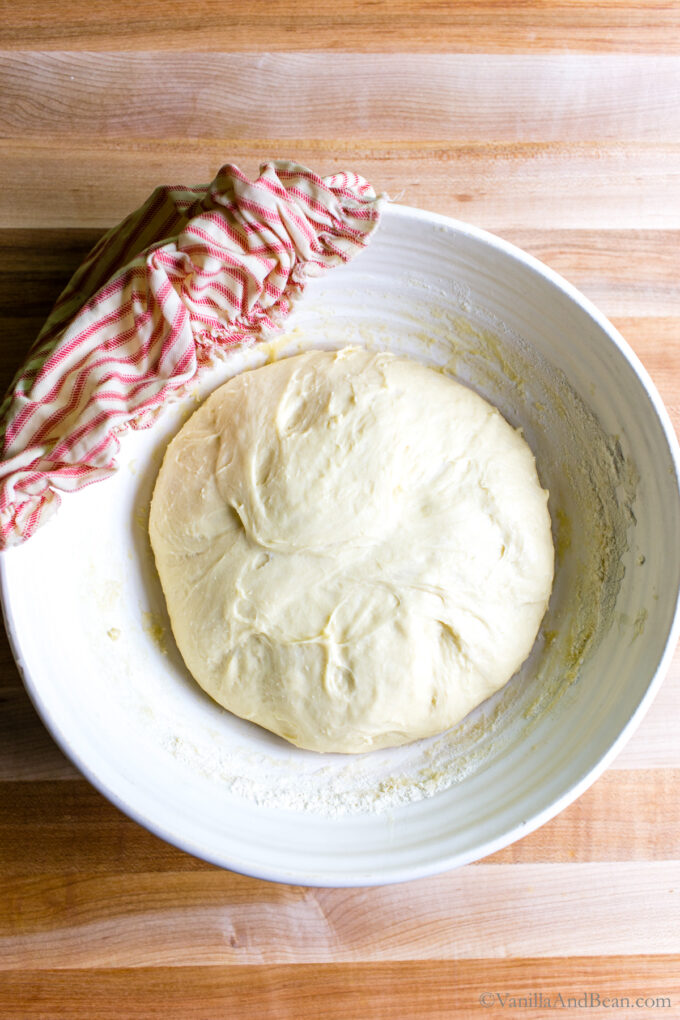
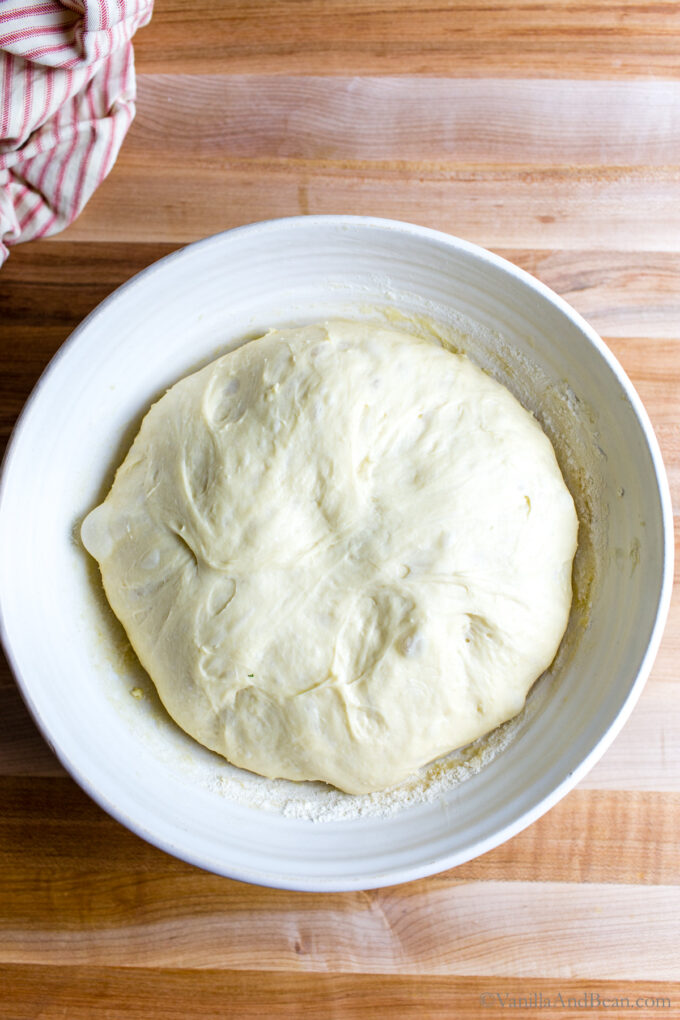
Baker’s Schedule
Note that these timelines are from a 68 Fahrenheit kitchen so timing will vary depending on ambient temperature and how active your starter is. Use these times as a guide. Here are a few example schedules to try:
1. Long Overnight Ferment at Room Temperature
This schedule is for bakers who like the convenience of already-baked buns when dinnertime rolls around. The sourdough buns rewarm beautifully toasted on the grill or wrapped in foil in the oven. I prefer this method because I don’t have to watch the clock as much as schedule two.
- Evening: mix the dough and perform a series of 2-3 stretch and folds with a 30-minute rest in between.
- Bulk Ferment overnight at room temperature 10-13 hours (68 Fahrenheit).
- Morning: divide the dough, shape, flatten, egg wash and proof for about 15 minutes, then bake.
2. Short Room Temperature Ferment with Long Overnight Refrigerator Proof
This schedule is convenient for bakers who want fresh-from-the-oven buns with their burger or sandwich. It allows for more flexibility when you’re ready to bake but requires a little more attention to the clock.
- Early Evening: mix the dough and perform a series of 2-3 stretch and folds with a 30-minute rest in between. Bulk ferment at room temperature for 4 hours (68 Fahrenheit).
- Late Evening: divide the dough, shape, and proof in the fridge 12-20 hours.
- Morning – Early Evening: rest at room temperature for one hour, flatten the dough balls, egg wash, then bake.
Shape the Dough
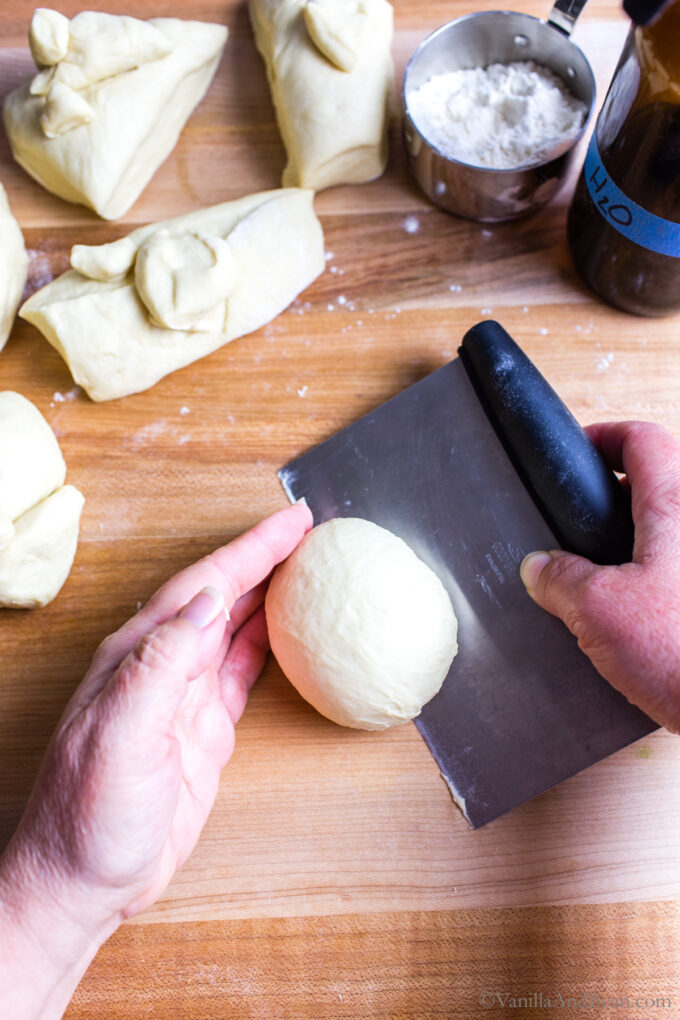
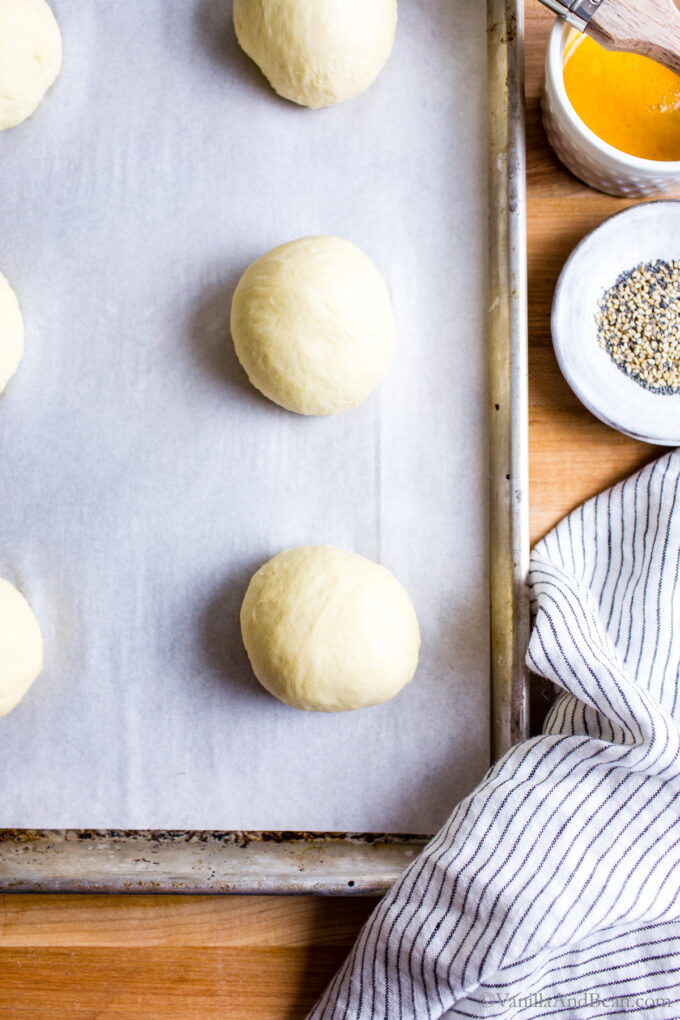
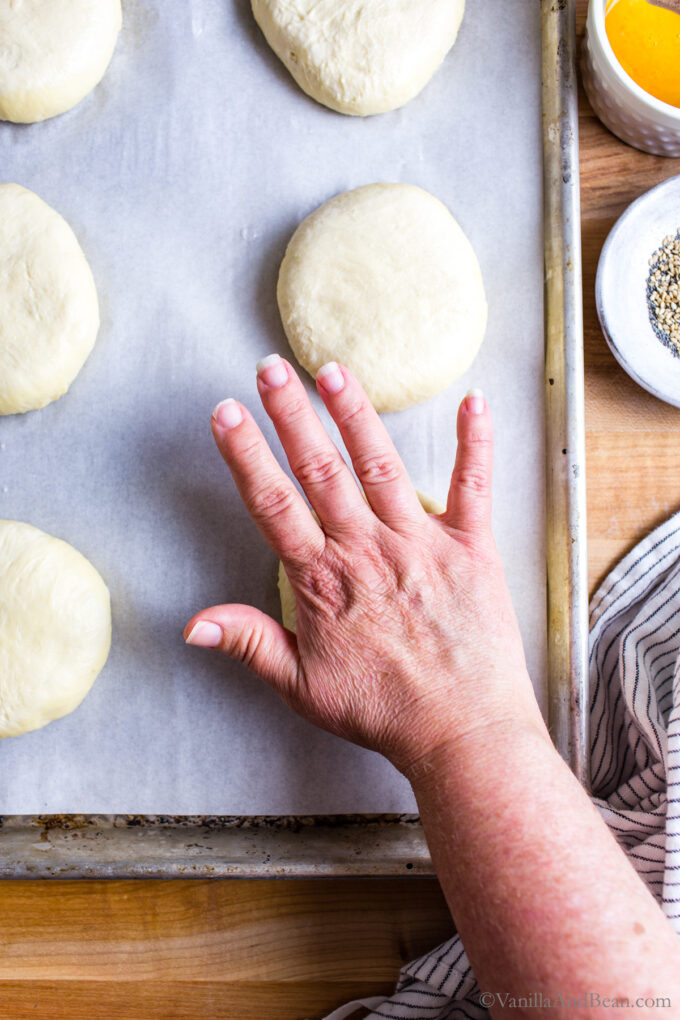
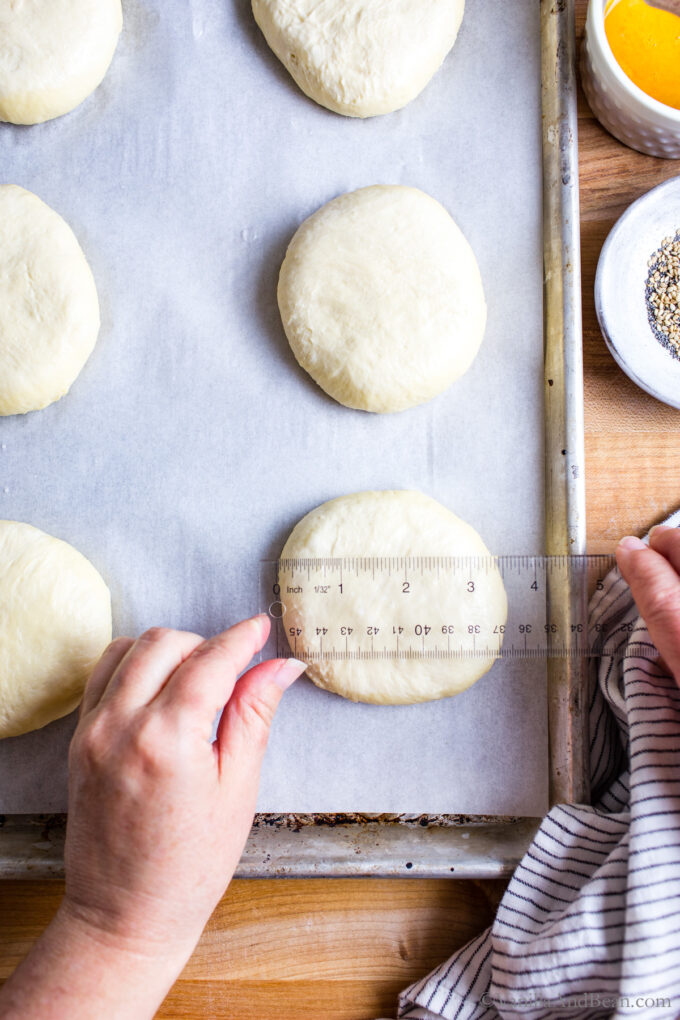
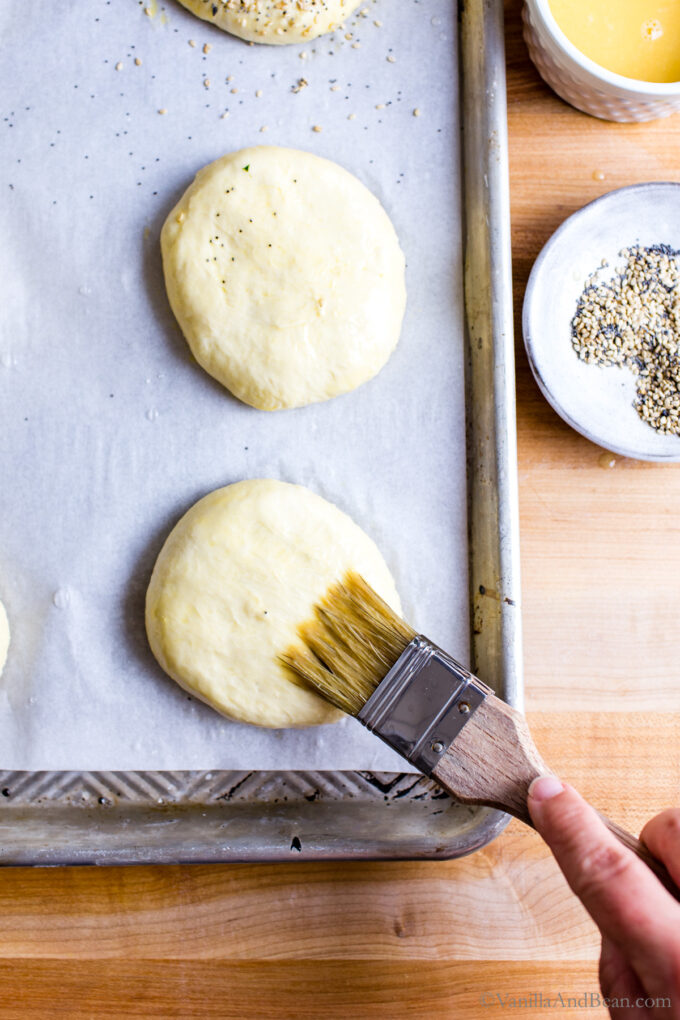
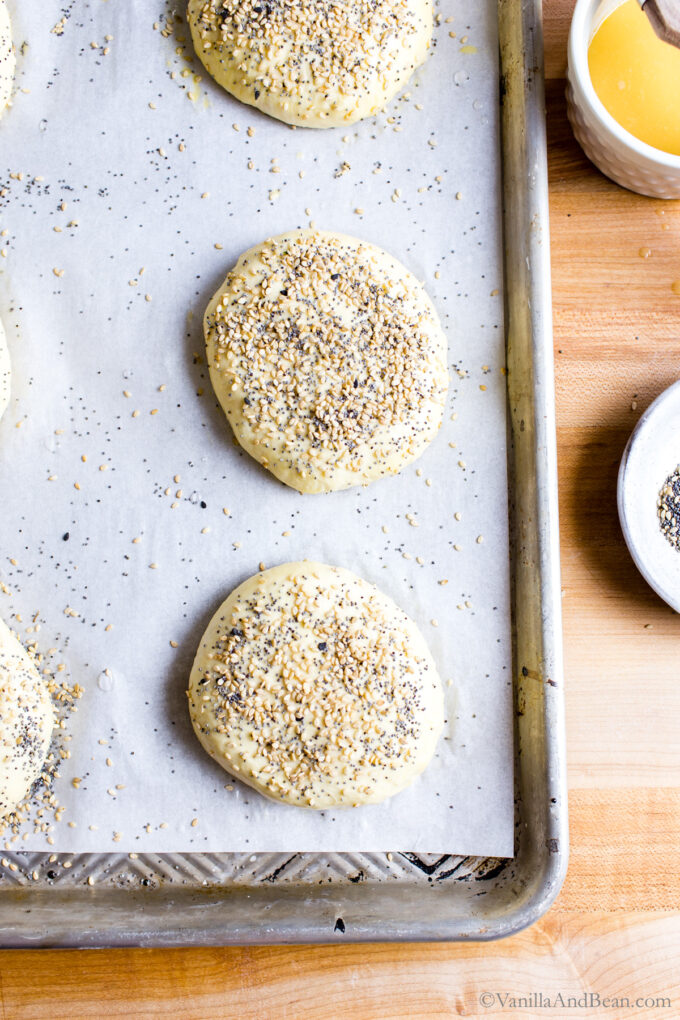
______________________________________
How to Shape Sourdough Burger Buns Video
______________________________________
Serving Suggestions
These buns are the ideal vehicle for enjoying all the tasty burger ingredients you’ll put on them, but they also make delightful sourdough sandwich buns. Here are some ideas for your buns:
- Black Bean Walnut Burgers with Saucy Sweet Onions: this is my most popular burger recipe. It’s grillable, hearty, filling, and they’re make-ahead ready too. Those saucy sweet onions steal the show!
- BBQ Chickpea Burgers: chock full of veggies and chickpeas, these veggie burgers are grillable and flavorful! The homemade Bourbon BBQ Sauce puts these burgers over the top!
- Pulled Portobello BBQ Sandwiches: a tasty vegetarian BBQ sandwich, these come together super fast and are a mouthwatering alternative to traditional BBQ.
- Tangy Lentil Sloppy Joes: a throwback to the 80s, Manwich has nothing on these saucy sandwiches. They’re rich, flavorful, and so satisfying (they’re a maker favorite)!
- Sweet Potato Lentil Burgers: sweet potatoes make up the bulk, while quinoa and red lentils provide protein power. Hearty and delicious, they’re ideal with sourdough burger buns.
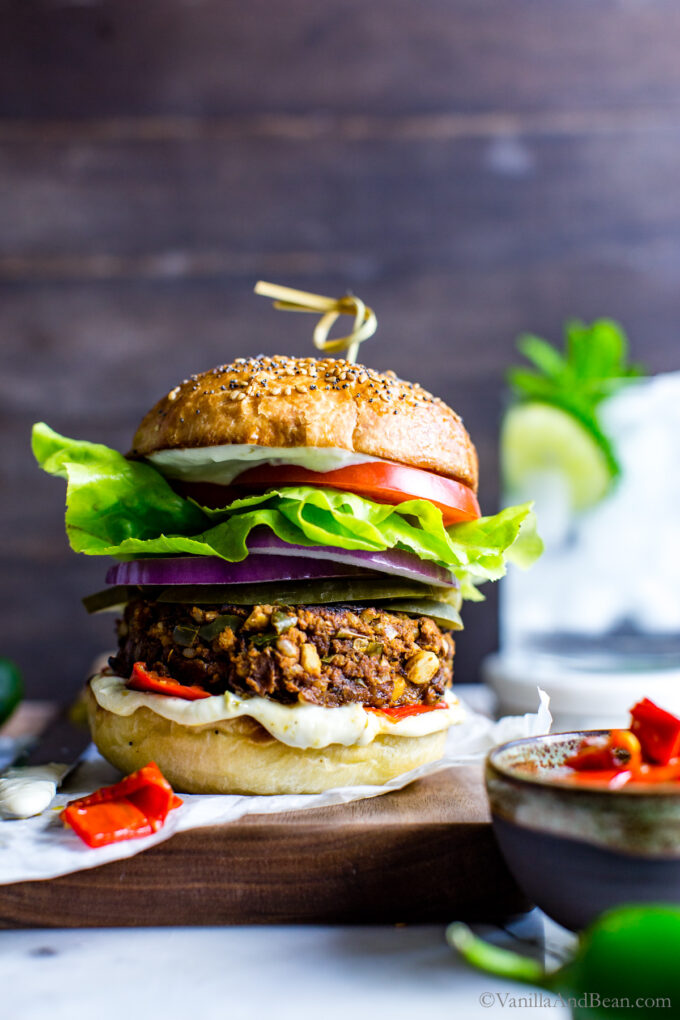
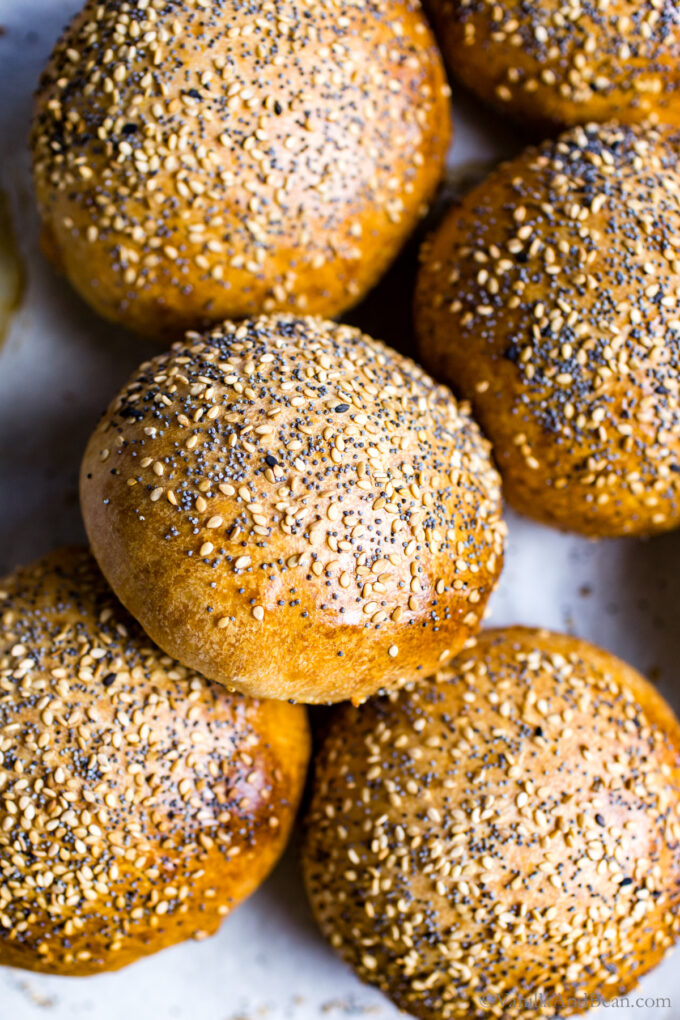
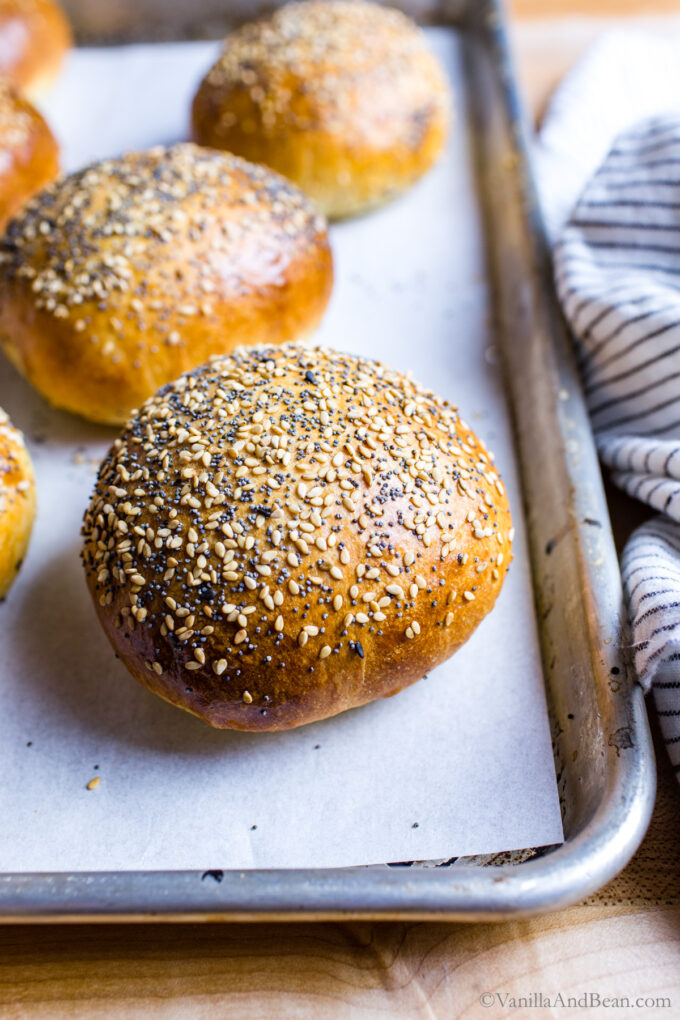
Pro Tips
- Starter: start with a 100% hydration sourdough starter. See my Sourdough Bread Starter Post for a DIY guide.
- Seeds: Use a mix of sesame and poppy seeds sprinkled on top, opt for one or the other or none at all.
- Internal Temperature: to know when the Sourdough Burger Buns are done baking, check the internal temperature using a digital thermometer (affiliate). When done, they should read between 190 – 205 Fahrenheit (88 – 96 Celsius). I typically bake closer to 205 Fahrenheit because I love a dark golden color.
- Kitchen Tools: I recommend a digital oven thermometer with an air probe and weighing your ingredients using a digital kitchen scale for best outcome (affiliate links).
- Freezer Friendly: allow the rolls to cool completely. Wrap in foil (limits freezer burn), then in a freezer bag for up to two weeks. I’ve messed around with freezing before baking, but the baked rolls didn’t meet my expectations.
More Sourdough Recipes to Love
Sourdough Hamburger Buns (no mixer needed)
Ingredients
- 3/4 cup + 1 tablespoon (190 grams) Milk dairy or plant milk**
- 5 tablespoons (70 grams) Unsalted Butter
- 3/4 cup (150 grams) Sourdough Starter 100% hydration, doubled in size
- 2 Eggs large, divided: one for the dough and one for washing
- 2 2/3 cups (365 grams) Bread Flour
- 2 tablespoons (33 grams) Cane Sugar
- 1 1/4 teaspoons Fine Sea Salt
For Sprinkling (optional)
- 1 tablespoon Sesame Seeds
- 1/2 teaspoon Poppy Seeds
Instructions
Make the Dough:
- Melt: In a small sauce pan, add the milk and butter. Warm on low just until you start to see steam rising from the pan. Turn the heat off and swirl the ingredients together, allowing the butter to completely melt. Do not bring to a simmer or boil, as we need that moisture to go into the dough. Set aside and allow the mixture to cool to 80 degrees Fahrenheit (27 degrees Celsius). You can do this in the fridge or at room temperature. Whisk before using in recipe.
- Mix: In the evening, whisk the starter, cooled milk/butter mixture and egg together in a large bowl with a fork. Add the flour, sugar and salt. First, mix with a fork, the dough will be shaggy. Then mix by hand, mixing, folding and pushing the dough until the flour is fully incorporated and no dry bits remain. The mixture will seem dry at first, but the more you work the dough, the more hydrated it will become. The dough will feel soft and sticky and it will stick to your fingers as you go. Do this for about 3-4 minutes. Use the fork to scrape the dough off your fingers as much as you can. Cover bowl with a damp tea towel. Set a timer for for 30 minutes and allow the dough to rest. Now is a good time to feed/refresh your starter.
- Fold the Dough: After the dough has rested, fold the dough. To do this, grab a portion of the dough while it remains in the bowl, with moist fingertips, stretch it up and fold it over, pressing your fingertips into the center of the dough. You'll notice the dough is soft and stretchy at this point. Repeat, until you've worked your way around the dough. This is the first fold, and you can stop here and begin bulk fermentation, but If time permits, and optimally, you'll want to repeat this fold one or two more times as it improves the final dough's structure and crumb. Allow for about 30 minutes between folds.
Bulk Fermentation (first rise):
- After the last fold, cover the bowl with two damp tea towels and allow to rise overnight at room temperature. This will take about 10-13 hours at 68 Fahrenheit (20 Celsius). Use the time as a guide and not a determining factor. (See notes* for an alternate schedule.).The dough is ready when it no longer looks dense, is jiggly when the bowl is shaken, and has doubled in size.
Shape the Buns & Proof:
- Line a large sheet pan (12×17 inches / 30×43 centimeters) with parchment paper. Set aside.Divide and Shape the Dough: In the morning, and with damp fingertips, coax the dough onto a floured work-surface. Divide the dough into 6 pieces. If you like, weigh the pieces to ensure uniformity (139 grams or 4.9 ounces each). Working quickly, with a piece of dough on the work surface, pull two opposite short ends towards the center of the dough, press, then roll it up (see video below). Place the dough on the work surface, seam side down, sprits a touch of water on the work surface to increase friction if needed, and gently cup your hand behind the dough ball and pull it towards you to increase surface tension. Use a bench scraper to help if needed. Place the dough balls evenly on the sheet pan, spread apart, in a 2 x 3 arrangement. Cover with a lightly moist tea towel and rest for 15 minutes.
- Preheat the Oven: Set an oven rack in the center of the oven and preheat the oven to 425 degrees Fahrenheit (218 Celsius). Meanwhile crack an egg in a small bowl and add a tablespoon of water. Whisk, set aside. Have your seeds ready if using. Fill a plate shallow with water. Set aside.
- Flatten the Balls: After 15 minutes, dip your palm in the shallow plate of water. Use your palm to gently yet firmly press individual dough balls to flatten. You'll want each disk to measure 3 1/2 inches in diameter (8.9 centimeters). You'll need to press each dough ball then go back again, pressing as needed. Measure each one before the next step. If they're not perfect at this point, you can nudge them again after proofing.
- Proof the Dough: cover with a lightly moist tea towel and proof for 15 minutes. The dough will be slightly puffy when ready. If they've shrunk a bit, you can gently press them again with a moist palm. Remeasure as needed.
Bake the Buns:
- Lightly brush the egg wash over each piece of dough on top and sides using a pastry brush. Sprinkle with seeds if using. Place the buns into the oven and bake at 425 Fahrenheit for 15-20 minutes. The rolls are ready when the internal temperature is between 190 – 205 Fahrenheit (88 – 96 Celsius) and they're golden brown. When done, allow to cool on the sheet pan.
- How to Store: Store at room temperature for up to two days in a plastic bag. You can rewarm at 350 Fahrenheit wrapped in foil to preserve their soft texture, or warm on the grill, sliced in half and brushed with olive oil, flat side down. Freezer: Cool completely. Wrap in foil, then in a freezer bag for up to two weeks. Thaw at room temperature.

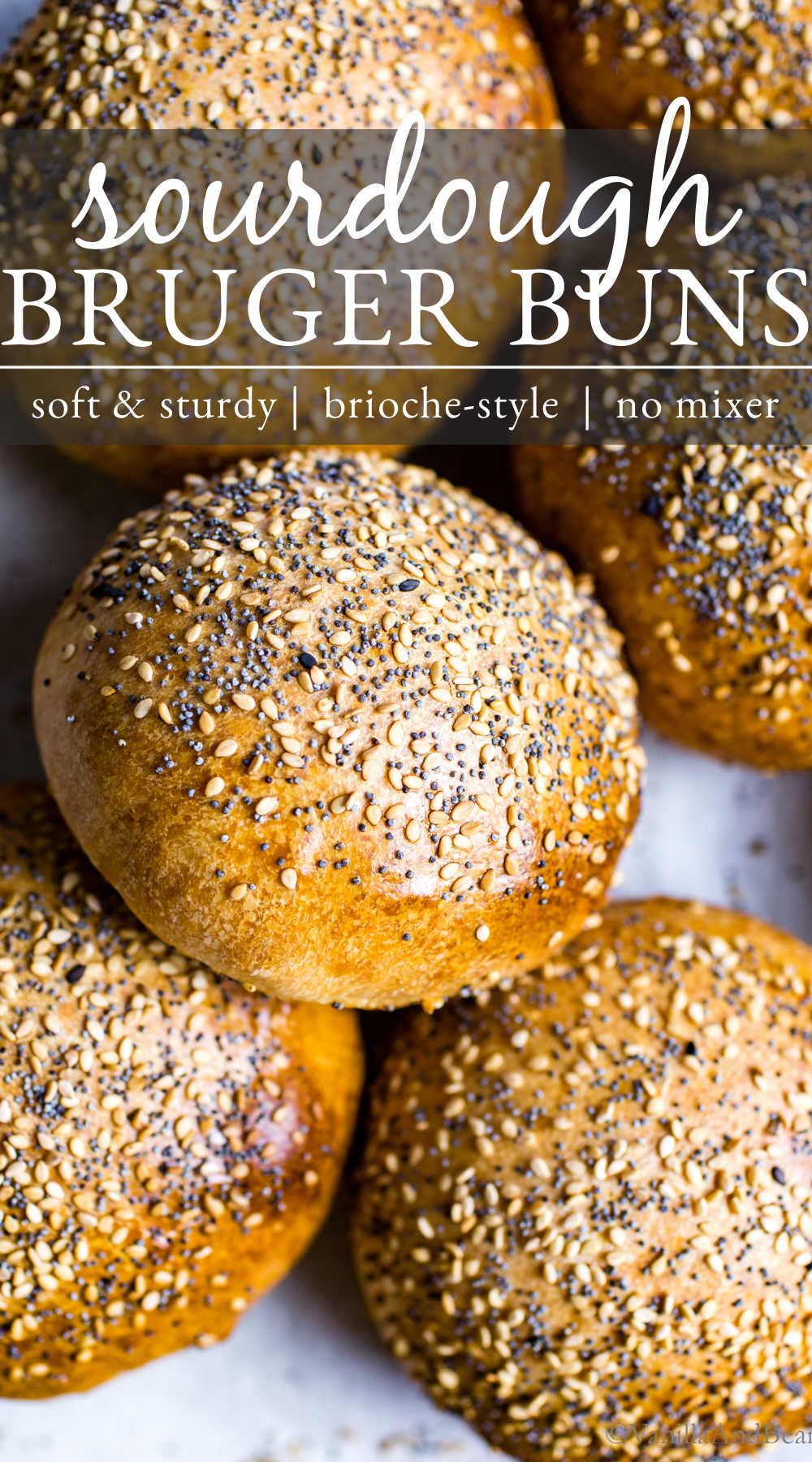
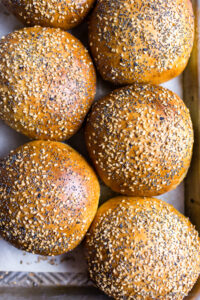
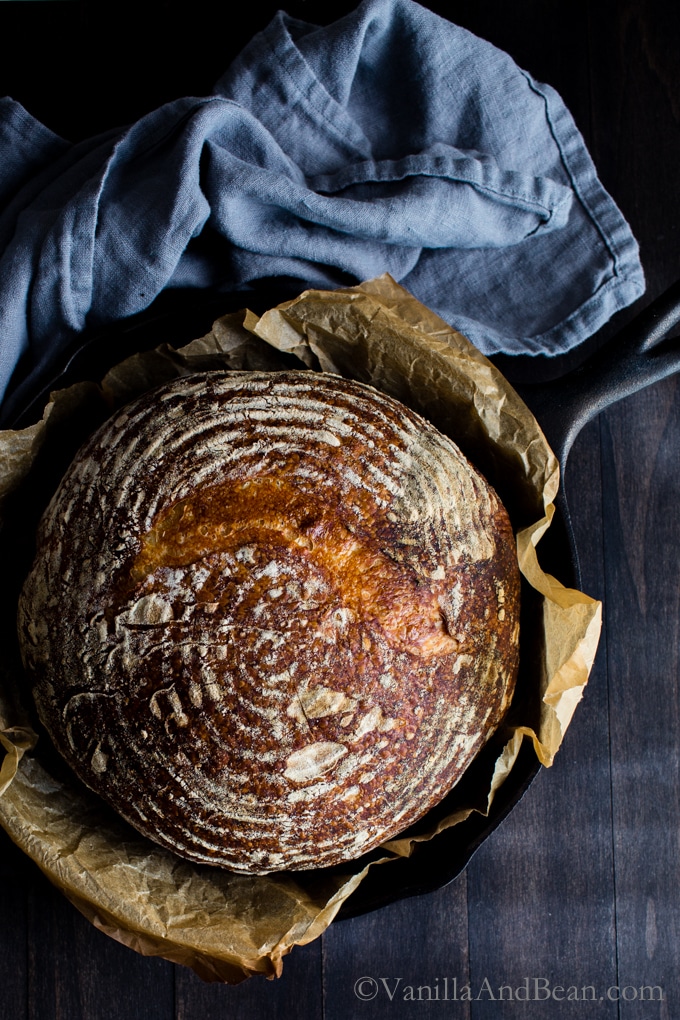
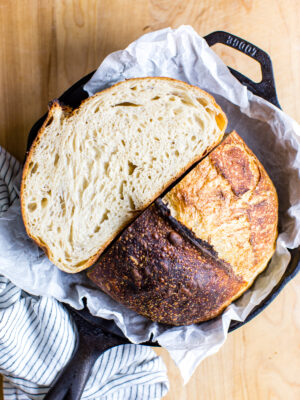
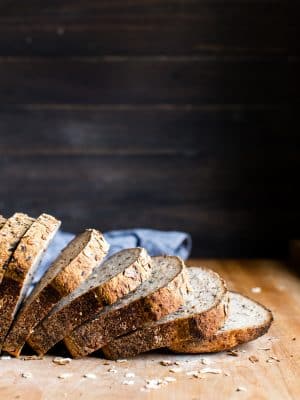
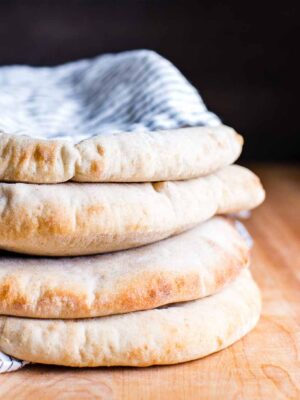
Lovely recipe! Is the nutrition details refering to 1 bun or all 6? Thank you
Hi Ava. Thank you! Estimated nutrition is for one bun.
Fairly new to sourdough. This recipe was easy and wonderful.
I did let my dough rest in the refrigerator after the bulk rise while I worked. Took it out and let come to room temperature then made the balls and it worked out great!
Thanks for the yummy recipe!
SO excited, Lesley! Thank you for your note, five star review and giving the buns a go!!
This was my first recipe using my starter and it was soo delicious. Instructions are easy to follow and they are so soft and fluffy!
We love this recipe for homemade sourdough buns. Easy to follow and fills the home with Wonderful aroma and delightful flavors. So far have made rye buns, Einkorn buns, and today sourghum buns. Thank you so much.
I’ve made these burger buns twice now. I LOVE it. Easy and so good. I’m becoming a bun offiinado!
Hi Rande! Thank you for giving the buns a go, five star rating and note. Yes to a bun aficionado! Hooray!
Nothing better than a homemade bun for all kinds of summer burgers Traci! These look fantastic!